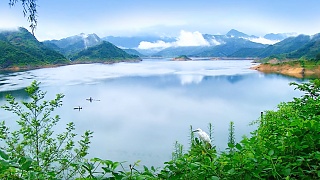With a number of Buddhist temples.
[640],shadow=true,start=,stop=

Live more ...
 JiuHua Shan 九华山, AnHui province
JiuHua Shan 九华山, AnHui provinceWith a number of Buddhist temples.


|
One missile - 16 people died, to silence truth.
Michael Hudson on how human rights have been privatized / commercialized (monetized) in the US ...
|

|
With Fly Over China ...
|

|
JiangSu province.
|

|
A short 30 minute high speed train ride from BeiJing, TianJin is the largest coastal city in northern China.
|

|
Bonus film - Siddhartha, by Hermann Hesse ...
|

|
With Lowkey Bosses ...
|

|
With Li JingJing and Ben Norton ...
|

|
Bonus film - the Great Wall near Beijing in 4K ...
|